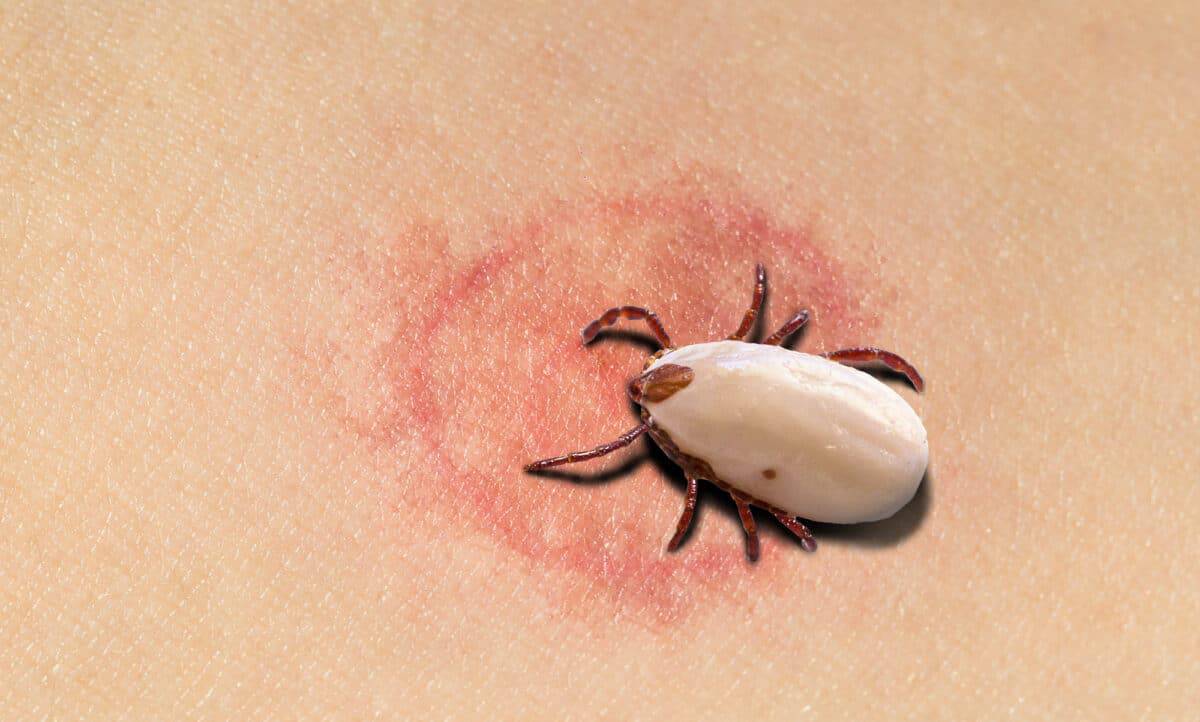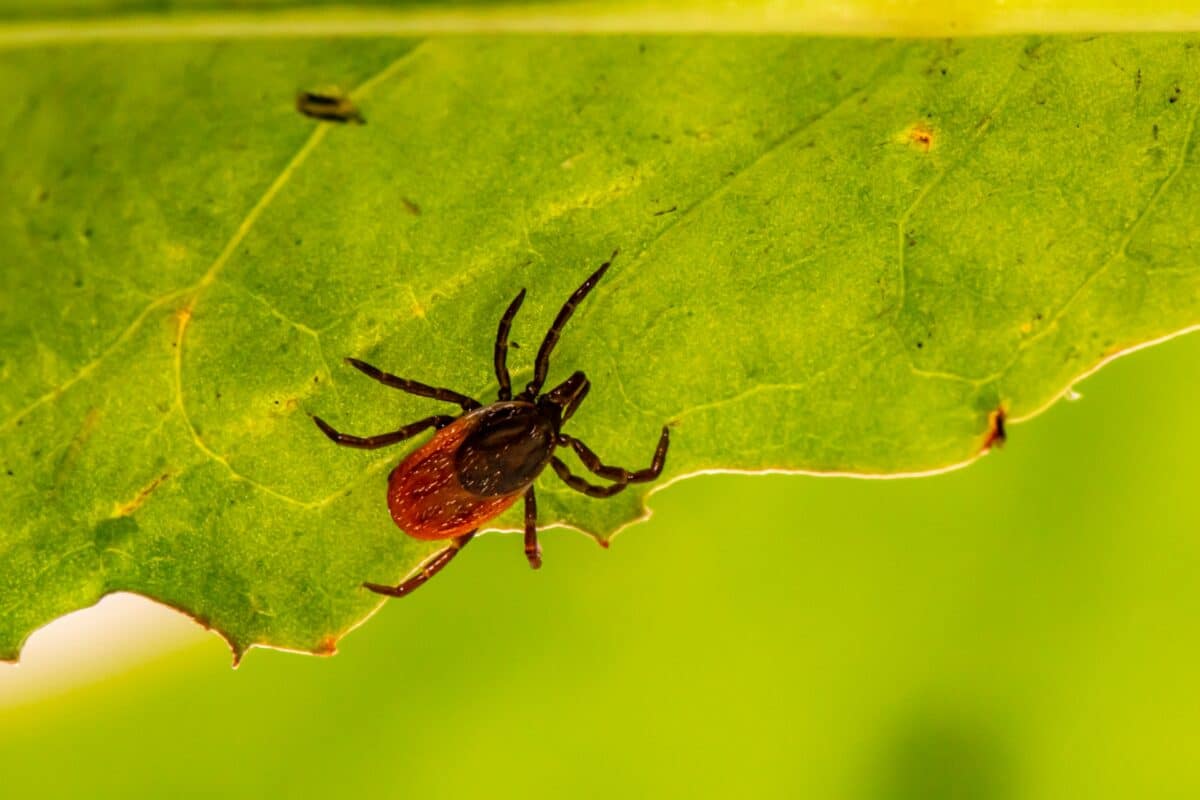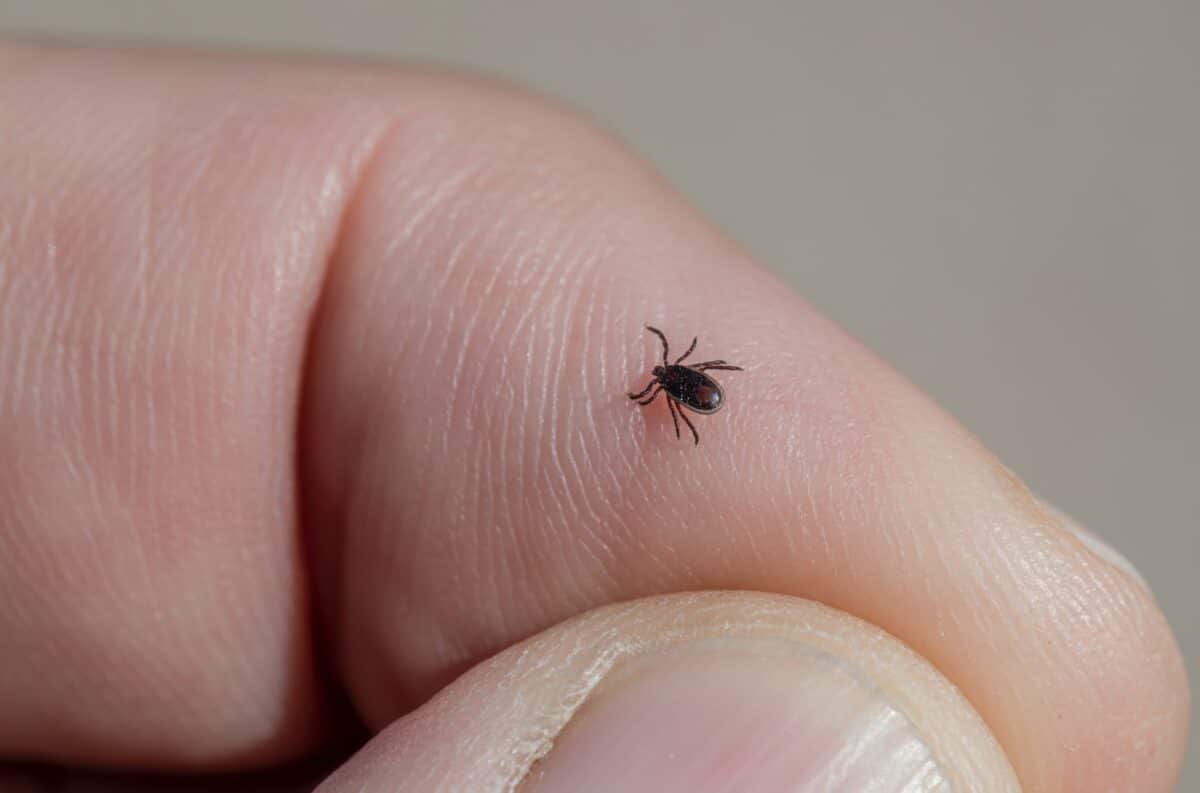Pennsylvania has the largest population of ticks in the U.S. – in this post, you’ll learn how to avoid them (and thereby how to avoid Lyme disease).

When we think of the Midwest, it is often long summer days playing in open pastures or strolling through lush newly-bloomed meadows that come to mind. However, with all its beauty comes potential danger: a hidden vector that is invisible to us but has made its home here in Pennsylvania – ticks and Lyme disease.
Ticks feed on mammals, birds, and other warm-blooded animals – that often are completely unaware of this! However, it is not their bloodsucking that poses a danger. But, when they do this, there’s a fairly high chance that they’ll pass on an extremely dangerous disease to you – namely, Lyme disease.
To protect ourselves from this unseen menace and keep our outdoor adventures safe, it is essential to understand what Lyme disease is, how it affects you — and which steps are necessary for protective measures.
Key Points
- Ticks are tiny arachnids found in grassy, wooded areas and areas with lots of wildlife.
- The most common types of ticks in North America are the deer tick, dog tick, and lone star tick.
- Lyme disease is a bacterial infection transmitted through the bite of an infected tick, and deer ticks are the primary carriers.
- Symptoms of Lyme disease include flu-like symptoms, a bull’s-eye rash, joint pain, neurological problems, and heart palpitations.
- To protect against ticks and Lyme disease, it is essential to recognize tick habitats, wear proper clothing and gear, use tick repellent, and regularly check for ticks.
- If bitten by a tick, proper removal and cleaning are important, and seeking medical attention for symptoms is necessary.
What Are Ticks and Where Do They Live?

Ticks are tiny arachnids that usually inhabit grassy and wooded areas. They are parasites that attach to the skin of mammals, birds, and other warm-blooded animals. Typically, they tend to prefer areas with lots of brush or leaf litter. They thrive in warm, humid environments and are most active during certain times of the year.
The species prefers vegetation that provides shade and moisture, such as tall grasses, shrubs, and wooded areas. Areas with lots of wildlife, like deer, mice, and squirrels, are typical tick habitats.
There are over 850 species of ticks worldwide and about 90 different species in North America. The most common tick types are the deer tick, dog tick, and lone star tick.
Deer ticks, also known as black-legged ticks, are the primary carriers of Lyme disease. They are small, black or brown ticks with a reddish-brown abdomen.
Seasonal Activity of Ticks
Ticks are most active during the year’s warmer months, typically from April to September. However, they can be active year-round if the weather is mild. During the cooler months, ticks become less active and go through periods of inactivity or diapause.
During the summer, deer ticks are most active during the nymph stage, which occurs from May to early August. This is also the time when most cases of Lyme disease are reported.
It is essential to take precautions during all seasons to avoid tick bites and reduce the risk of Lyme disease, but it is especially in summer that you need to keep your eyes peeled.
(Another tiny creature to watch out for is the dreadful bedbug – read about the early signs of them here.)
What is Lyme disease?

Lyme disease is a bacterial infection transmitted through an infected tick’s bite. The bacteria, Borrelia burgdorferi, is transmitted during the tick’s feeding process and can subsequently cause various symptoms.
Common Symptoms
The early signs of Lyme disease can often be mistaken for flu-like symptoms, including fever, fatigue, chills, headache, and muscle aches. As the disease progresses, patients may experience a characteristic “bull’s-eye” rash that appears at the site of the tick bite.
Other symptoms can include:
- Joint pain
- Neurological problems
- Heart palpitations
If left untreated, these symptoms can become chronic and debilitating. Some patients can even fall victim to neurological damage, arthritis, and heart problems.
Long-Term Effects of Untreated Lyme Disease
If left untreated, Lyme disease can have severe and long-lasting effects on a person’s health.
For some patients, the symptoms of the disease can become chronic, lasting for months or even years after their initial infection. Chronic Lyme disease can cause various symptoms, including joint pain, fatigue, muscle weakness, and cognitive impairment.
Also, untreated Lyme disease can lead to more severe complications like heart problems, nerve damage, and arthritis. With proper treatment, however, most patients will fully recover and prevent the spread of infection.
Statistics of Lyme Disease
According to the Centers for Disease Control and Prevention (CDC), approximately 30,000 cases of Lyme disease are reported by state health departments annually. This is already a huge number, but they estimate that the real number could be 10 times higher, around 300,000 cases each year, due to underreporting.
Being the state where ticks are most prevalent, Pennsylvania ranks first on the list of when it comes to states with the highest rate of Lyme disease. On average, 100,000 cases of Lyme disease are reported in Pennsylvania every year. Further, in 2018, a total of 73,610 cases of tick-borne diseases were reported.
How To Protect Yourself From Ticks and Lyme Disease

The following elements should be considered to protect yourself from ticks, and consequently from Lyme disease.
#1 Recognizing Tick Habitats
To protect yourself from ticks and Lyme disease, it is essential to recognize and avoid their habitats. Ticks are commonly found in wooded and grassy areas, so be cautious when walking or hiking.
Avoid walking through long grasses and vegetation, as ticks may latch onto your clothing and skin. If possible, stick to a designated path or trail. Also, consider wearing insect repellent that contains DEET to protect yourself further.
It is also essential to check yourself for ticks after having spent time in a potential tick habitat. Preferably, get a friend or family member to look you over to ensure that you don’t miss spots you can’t see yourself.
#2 Proper Clothing and Gear
Proper clothing and equipment can significantly reduce your risk of tick bites. Wear long-sleeved shirts, pants, and high socks that cover your calves to prevent ticks from latching onto your skin.
Tuck your pants into your socks to avoid any exposed skin. Consider wearing light-colored clothing, as it can make spotting ticks easier. Additionally, consider using permethrin-treated clothing and gear, which have been proven to repel ticks.
(Click here to uncover yet another tiny creature that can cause you much pain.)
Methods For Tick Removal

If you find a tick on your skin, removing it correctly and promptly is vital. Use fine-tipped tweezers to grasp the tick as close to your skin as possible and pull it out slowly and steadily.
Avoid twisting or jerking the tick, which can cause the mouthpart to remain embedded in your skin. Once the tick is removed, clean the bite area with soap and water or rubbing alcohol.
Lyme Disease Testing and Treatment

If you suspect a tick has bitten you or are experiencing Lyme disease symptoms, it is essential to seek medical attention immediately. Lyme disease symptoms include fever, rash, joint pain, and fatigue. Diagnosis is typically made through blood testing.
Treatment for Lyme disease is usually a course of antibiotics that your doctor prescribes. By following these protective measures and staying vigilant, you can safely enjoy the great outdoors while minimizing the risk of tick bites and Lyme disease.
Additional Information and Resources
Living in Pennsylvania, knowing the various resources available for tick prevention and treatment is essential.
Local health clinics and hospitals offer tick removal and treatment services, including antibiotics. You must seek medical attention immediately if you notice Lyme disease symptoms, such as a bullseye rash, fever, or joint pain.
Research and Advancements
The field of Lyme disease research has made significant progress over the years, leading to advancements in prevention and treatment. Numerous ongoing clinical trials are testing potential Lyme disease vaccines, with one currently approved by the FDA.
Additionally, Research has led to the development of tick-repellent clothing and sprays effective against tick bites. Regarding treatment, newer antibiotics are more effective in treating Lyme disease (and has fewer side effects.)
The Bottom Line
In conclusion, ticks are a hidden danger that we must be aware of when enjoying the beauty of the Midwest. Illinois is home to the black-legged tick, the primary Lyme disease carrier.
Taking precautions such as wearing protective clothing, using insect repellent, and checking for ticks after outdoor activities is essential.
If you do get bitten, early detection and treatment are vital in preventing the severe symptoms of Lyme disease. Take a moment to learn the many symptoms of Lyme disease so that you can recognize them if you or someone you know displays them.
Remember, whether you’re in Pennsylvania or not, always be vigilant of ticks to keep yourself and your loved ones safe from the threats of Lyme disease.
Thank you for reading this article! Continue your exploration of the world of insects: learn whether the praying mantis bites or if bumble bees sting.
- Octopus Stuck to Diver’s Back and Won’t Come Off - April 25, 2024
- Magpie Bird Is Reunited with Her Dog Best Friend - April 24, 2024
- Dog Saves Another Dog From Drowning in Fish Pond - April 23, 2024

